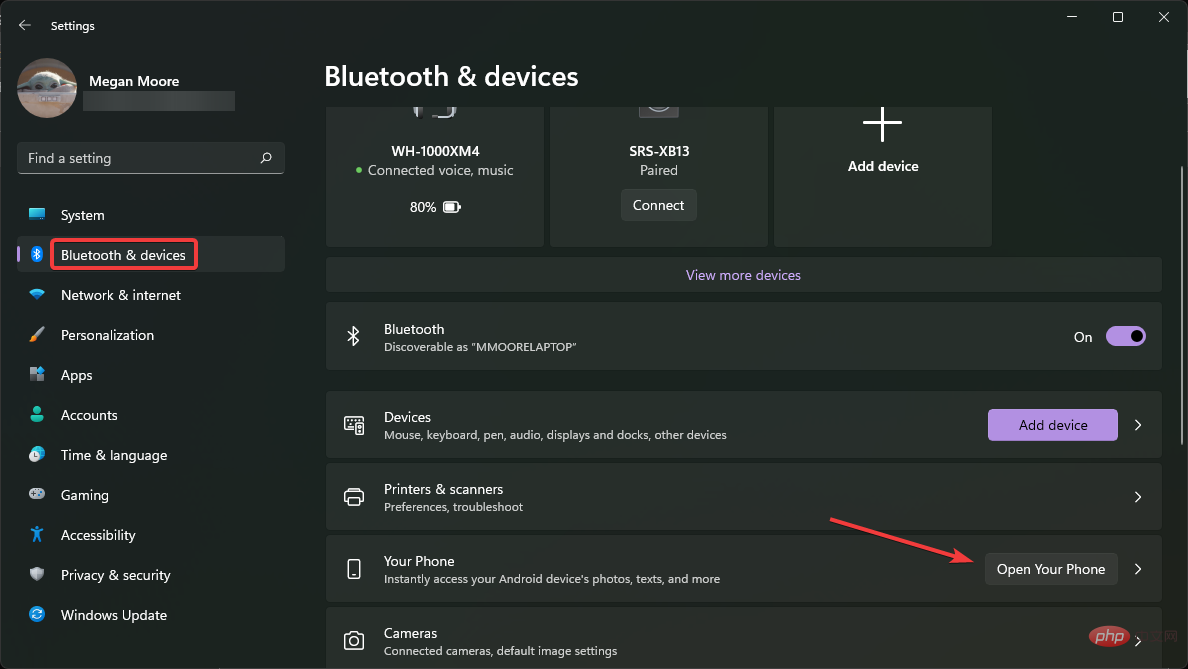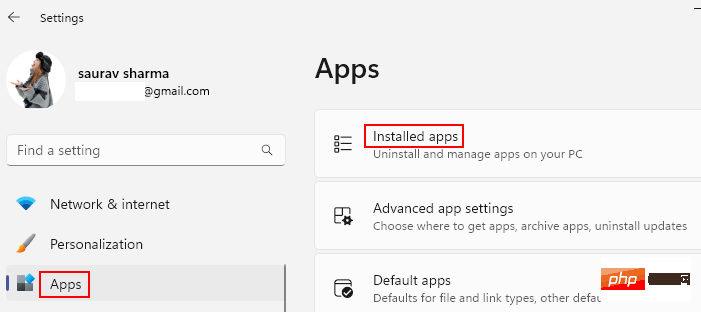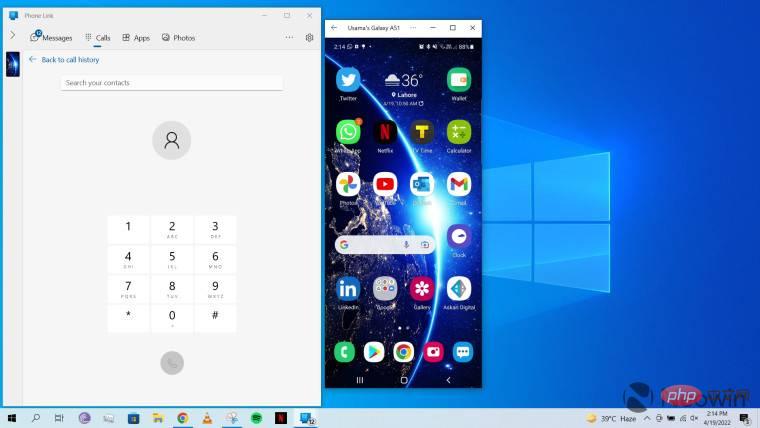Although I want to shout that LCD will never be a slave, I still have to recognize the fact that most of the mobile phones launched last year, whether they are flagship phones or thousand-yuan phones, use OLED screens and LCDs can be said to be over.
Take the current point in time as an example, if I want to buy an LCD mobile phone with decent performance, among the mobile phones released last year, there are only two machines: iQOO Z8 and Redmi Note 12T Pro Once the conditions are met, the choices can be said to be pitiful.

Other mobile phones either have too weak performance or poor LCD screen quality. Not to mention being the main phone, even using it as a backup phone may be a bit awkward.
Considering that the situation is stronger than the people, the LCD party can really consider switching to the OLED camp next.
Seeing this, some friends may be wondering why it is already 2024 and LCD mobile phones have almost no future, so why are there still a group of people guarding LCDs.

Hi, although LCD has no advantages in contrast and viewing angle compared to OLED, it is good at protecting the eyes and does not burn the screen. , like me, a user who is sensitive to stroboscopic light. When using certain OLED mobile phones, my eyes are always tired easily.
So a while ago I was looking for a 1TB backup machine with a price tag of less than 2,000 yuan. I didn’t choose either the Realme GT Neo5 SE or the OnePlus ACE 2v equipped with a 1.5K screen. In the end, I chose the resolution of only 1080P, but the stroboscopic performance was Relatively speaking, the Redmi Note 12 Turbo is more eye-friendly.

If you want to see the screen flickering, it is very simple. We only need to take another mobile phone, open the camera, select video, adjust the shutter speed, and shoot against the OLED screen. You can see black stripes.
The number of black lines reflects the frequency. The more black bars, the higher the strobe frequency (the more black bars, the better).
At the same time, the thickness of the white line and the black line represents the duration of the brightness and darkness of the screen (the thinner the black bar, the better); while the color of the black line can reflect the brightness fluctuation of the screen each time it flickers. How big (the lighter the better).

If this screen uses an LCD, it will have no black bars no matter what the brightness is, which means there will be no flicker.
The reason why the screen flickers is mainly related to its dimming method.
To put it simply, there are currently two common dimming methods for mobile phones to control screen brightness, namely DC dimming and PWM dimming. The former changes the screen brightness by adjusting the current; while the latter changes the screen brightness by adjusting the current. Control the brightness of the screen to change the screen brightness.

As we all know, each pixel of OLED can emit light independently.
If DC dimming is used to control brightness, a 2K resolution screen has about 3.68 million pixels, which is very difficult to control. Since each pixel has a different "physical quality", Under low voltage, the brightness of each pixel will also be different, which can easily lead to uneven screen brightness and color cast.
To be more serious, one part of the screen is bright and one part is dark, and it looks like a rag:

And an LCD with an independent backlight will not There is this problem. If the voltage is applied to a large screen, it will be bright, and if it is applied to a small screen, it will be dark. Not to mention how trouble-free it is. Therefore, most LCD mobile phones use DC dimming, while OLED mobile phones generally use PWM dimming.
Since PWM dimming is essentially a "bright-dark-bright-dark" process, as long as the screen flashing frequency, light and dark maintenance time and brightness fluctuation are controlled, the brightness adjustment effect can be achieved. But this results in inevitable flickering or flickering on the screen.

#It’s just that because of the persistence of vision of the human eye, the screen still seems to be always on.
Speaking of which, when OLED mobile phones first came out, many people didn’t take stroboscopic seriously at all. It wasn’t until they used it for a long time that something was wrong, and they gradually began to realize the dangers of stroboscopic. Netizens online The call for "LCD will never be a slave" is getting louder and louder.

The response from mobile phone manufacturers is also quite intriguing.
In the beginning, the manufacturer’s attitude towards screen eye protection was: If you want it, I’ll do it.
In 2019, when OLED screens first became the high-end mainstream, we could see that many manufacturers had taken the trouble to create a DC-like dimming mode for mobile phones, and we could choose whether to turn it on or not.
. 
The reason why it is called "DC-like" is because it is actually a dimming method improved on the basis of PWM dimming. It has fewer and fewer stroboscopic black bars. The fine and light color makes the screen more gentle when flickering, which is very close to the effect brought by DC dimming.
At that time, many manufacturers even issued a "disclaimer" to inform in advance that after turning on the DC-like dimming/low-stroboscopic mode, the display effect of the screen may be affected at low brightness, and color casts may be encountered after turning it on. , smearing and other issues, don't blame me, it's like talking about the ugly things in front of you.

Fortunately, they later came up with a compromise, which was to allow the phone to continue to use DC-like dimming under high brightness, but still use PWM dimming under low brightness. Light, but this time, it becomes high-frequency PWM.
For example, the original 360Hz low-frequency PWM that flashes 360 times in 1 second is adjusted to the 1920Hz high-frequency PWM that flashes 1920 times in 1 second. When the strobe frequency reaches a certain level, the effect on people The impact on the eyes will be reduced, and it will be relatively more eye-friendly.

And in 2021, after mobile phones have successively used LTPO OLED screens that can dynamically adjust the screen refresh rate, manufacturers’ attitude towards screen eye protection has become: You say After all, I pretended not to notice that many mobile phones at that time secretly canceled DC-like dimming.
The reason why manufacturers changed their attitude was because at that time, Android flagships began to use 2K resolution screens. LTPO could adaptively adjust the screen refresh rate (1Hz-120Hz) to achieve power saving effects. It can be said to be perfect when paired with a 2K 120Hz screen.

And don’t forget, the Snapdragon 888 and Snapdragon 8 Gen 1 at that time were also power-hungry. Without LTPO, the phone’s battery life would most likely be reduced. collapse.
However, it is more difficult to do DC-like dimming on LTPO OLED screens, and it often requires the cooperation of screen suppliers. Those domestic screen suppliers can say no, but international manufacturers like Samsung say no. Right.

Here is a very intuitive example.
I was very impressed. In the Xiaomi 12 series, the standard version does not use the more expensive LTPO screen. There is an "anti-flicker mode" in the settings. When turned on, the screen will switch to a DC-like mode:

The Xiaomi Mi 12 Pro with LTPO screen does not have this option. No matter what the brightness is, it is 360Hz low-frequency PWM dimming:

This is also the case for several models launched by other brands.
Not to mention lies, a colleague in the editorial department even bit the bullet and used Xiaomi Mi 11 for three years because he couldn’t wait for a screen that protects his eyes!

Since last year, the attitude of manufacturers has undergone a 180-degree change. Almost every manufacturer will focus on the screen when introducing it at the press conference. When it comes to "eye protection", various science popularizations have even been done, and the eye protection solutions adopted by different companies today are also very different.

For example, vivo X100 series and iQOO 12 series do not have any kind of DC dimming, but focus on full-brightness high-frequency PWM dimming; Xiaomi 14 has full-brightness DC-like dimming, while OPPO Find X7 series and OnePlus 12 series are high-frequency PWM DC-like combinations.
The reason is that, on the one hand, thanks to the rise of domestic screens, these domestic mobile phone manufacturers can directly participate in the in-depth customization of screens, and it is not impossible to even launch joint research and development with a certain screen supplier. It is not a big problem to make some requirements during the development stage.

On the other hand, it is increasingly difficult for mobile phones to create differentiation in hardware and software. Even if they can, other manufacturers will soon follow.
After rolling in the broad direction, it is reasonable to start rolling out various details, from resolution, refresh rate, color accuracy, brightness to eye protection.
It can be foreseen that the new phones launched next will definitely put more thought into eye protection. From this point of view, although LCD mobile phones are gradually declining, those who stick to LCD for eye protection will Wait a minute, friends, maybe the next spring has arrived~
The above is the detailed content of The tide is over: LCD never-slave parties still lost after all. For more information, please follow other related articles on the PHP Chinese website!
 如何在 Windows 11 上创建移动热点Apr 17, 2023 pm 06:22 PM
如何在 Windows 11 上创建移动热点Apr 17, 2023 pm 06:22 PM当然,在Android智能手机和Windows11PC之间共享移动互联网可能很有用,尤其是在Wi-Fi不可用时。因此,当其他选项刚刚出现时,知道如何与Windows设备共享移动互联网会非常方便。就像没有Wi-Fi时iPhone可以连接到Mac一样,Android设备也允许用户通过USB和蓝牙将智能手机的互联网连接与任何Windows笔记本电脑连接。对于我们许多人来说,通过电缆连接手机和PC不是一种选择,而通过蓝牙连接互联网可能会很慢。因此,使用智能手机创建W
 Windows 11 无法识别安卓手机?这是一个快速修复Apr 13, 2023 pm 04:31 PM
Windows 11 无法识别安卓手机?这是一个快速修复Apr 13, 2023 pm 04:31 PMMicrosoft 用户可以使用应用 Phone Link(以前称为 Your Phone)将他们的手机连接到他们的 PC。此应用程序使您的 Windows PC 可以访问手机上的照片、文本、通知和其他数据。Phone Link 将能够镜像 Android 设备的屏幕。目前,对于部分三星智能手机,此功能仍处于测试阶段。用户仍然可以使用 USB 数据线将他们的 Android 设备连接到他们的 PC,但是,这只允许用户在他们的 PC 和智能手机之间传输文件、照片、音乐和其他媒体。要访问文本和电话,
 iPhone SE 2022 vs iPhone 13 mini:规格比较Apr 21, 2023 pm 06:37 PM
iPhone SE 2022 vs iPhone 13 mini:规格比较Apr 21, 2023 pm 06:37 PM2022iPhoneSE与iPhone13mini-物理尺寸第三代iPhoneSE采用与iPhone8相同的设计,带有Home键。对于Apple旧设备的用户或保留在iPhoneSE机型上的用户来说,这将是一个熟悉的外形尺寸。另一方面,iPhone13mini具有更新的设计。这是一款小型设备,但具有无边框显示屏和Apple的FaceID技术。Apple的第三代iPhoneSE尺寸为5.45x2.65x0.29英寸,重5.09盎司。
 Phone Link 应用程序无法在 Windows 11 上运行或无法打开Apr 15, 2023 pm 02:13 PM
Phone Link 应用程序无法在 Windows 11 上运行或无法打开Apr 15, 2023 pm 02:13 PM如果您尝试将智能手机与PC集成,则需要Windows的YourPhone应用程序。但是,有时您的手机应用程序可能无法在您的Windows11/10PC上运行或根本无法打开。这可能令人担忧,因为我们都需要经常将手机与我们的系统连接并同步,以用于不同的个人和官方目的,例如从智能手机接收通知和消息或同步照片。尽管该应用程序不断接收最新更新,具有改进的用户界面并且与全新的Windows11进行了整体升级,但它很容易出现错误和故障。如前所述,许多用户抱怨“你的手机”应用程序有时无法运行,
 如何使用 Phone Link 将 Android 手机连接到 Windows 电脑?Apr 20, 2023 pm 11:58 PM
如何使用 Phone Link 将 Android 手机连接到 Windows 电脑?Apr 20, 2023 pm 11:58 PM大约四年前,微软宣布推出“YourPhone”,一款可将WindowsPC与Android手机无缝连接的应用程序允许您在两台设备之间共享内容、通话和通知,并在它们之间轻松切换。几周前,该公司将此应用程序重新命名为“PhoneLink”,今天的教程将引导您了解如何使用PhoneLink将Android智能手机连接到Windows10或Windows11PC。请务必注意,为了利用此功能,您的WindowsPC上应安装PhoneLink应用程序,Android手机
 iPhone 15 Pro Max 打破智能手机最薄边框的记录May 10, 2023 pm 04:19 PM
iPhone 15 Pro Max 打破智能手机最薄边框的记录May 10, 2023 pm 04:19 PMiPhone15ProMax将拥有所有智能手机中最薄的边框,打破目前由小米13保持的记录。这是根据被称为“IceUniverse”的泄密者所说的,他过去曾泄露过有关苹果计划的准确信息。与iPhone14Pro相比,两款iPhone15Pro机型预计都将拥有更薄的弧形边框,这可能会带来类似AppleWatch的外观,但如果泄密者属实,较大的6.7英寸机型将拥有最小的边框.IceUniverse在一条推文中表示,iPhone15ProMax将“打破”小米13
 手机真的能安装同屏吗May 31, 2023 pm 05:10 PM
手机真的能安装同屏吗May 31, 2023 pm 05:10 PM手机真的能安装同屏,其方法是:1、在两台手机上都安装好AirDroidCast软件,并打开;2、在其中一台手机上,点击屏幕下方的“接收投屏”按钮;3、另外一台手机选择屏幕投射,输入接收投屏界面中的二维码;4、点击弹窗中的立即开始就能投屏到另外一台手机上,这样就可以开始同屏了。
 TechInsights:全球智能手机换机率有望触底,明年有望开始小幅反弹Jan 04, 2024 pm 03:53 PM
TechInsights:全球智能手机换机率有望触底,明年有望开始小幅反弹Jan 04, 2024 pm 03:53 PM根据TechInsights官方消息,过去十年来,全球智能手机的更换率持续下降,这是由于部分市场补贴减少、低收入预付费用户增加以及智能手机质量提升的影响根据全球经济前景不明朗等关键假设,TechInsights下调了2023年和2024年全球智能手机销量预测数字。因此,智能手机的换机率也将进一步下降。报告称,由于通货膨胀、利率上调、经济前景不明朗,2023年,全球智能手机的换机率可能会跌至23.5%(换机周期为51个月)的最低点。从2024年开始,由于经济复苏和5G迁移,换机率将缓慢反弹。▲图源


Hot AI Tools

Undresser.AI Undress
AI-powered app for creating realistic nude photos

AI Clothes Remover
Online AI tool for removing clothes from photos.

Undress AI Tool
Undress images for free

Clothoff.io
AI clothes remover

AI Hentai Generator
Generate AI Hentai for free.

Hot Article

Hot Tools

Zend Studio 13.0.1
Powerful PHP integrated development environment

Dreamweaver CS6
Visual web development tools

EditPlus Chinese cracked version
Small size, syntax highlighting, does not support code prompt function

ZendStudio 13.5.1 Mac
Powerful PHP integrated development environment

SublimeText3 Linux new version
SublimeText3 Linux latest version






